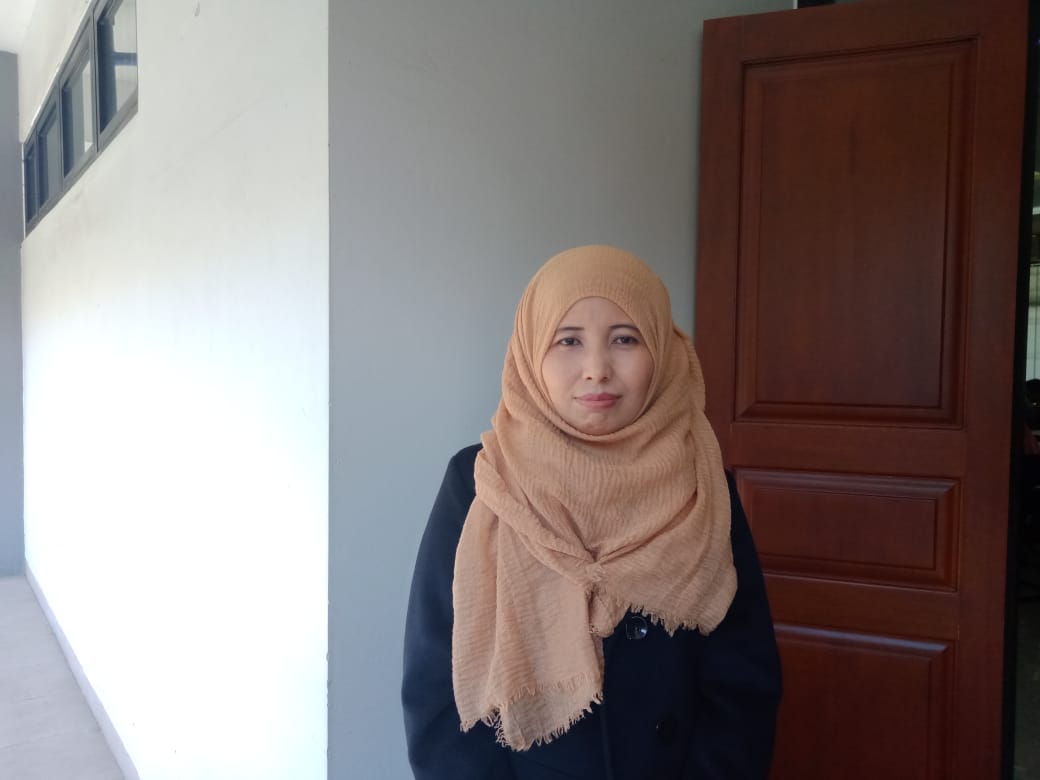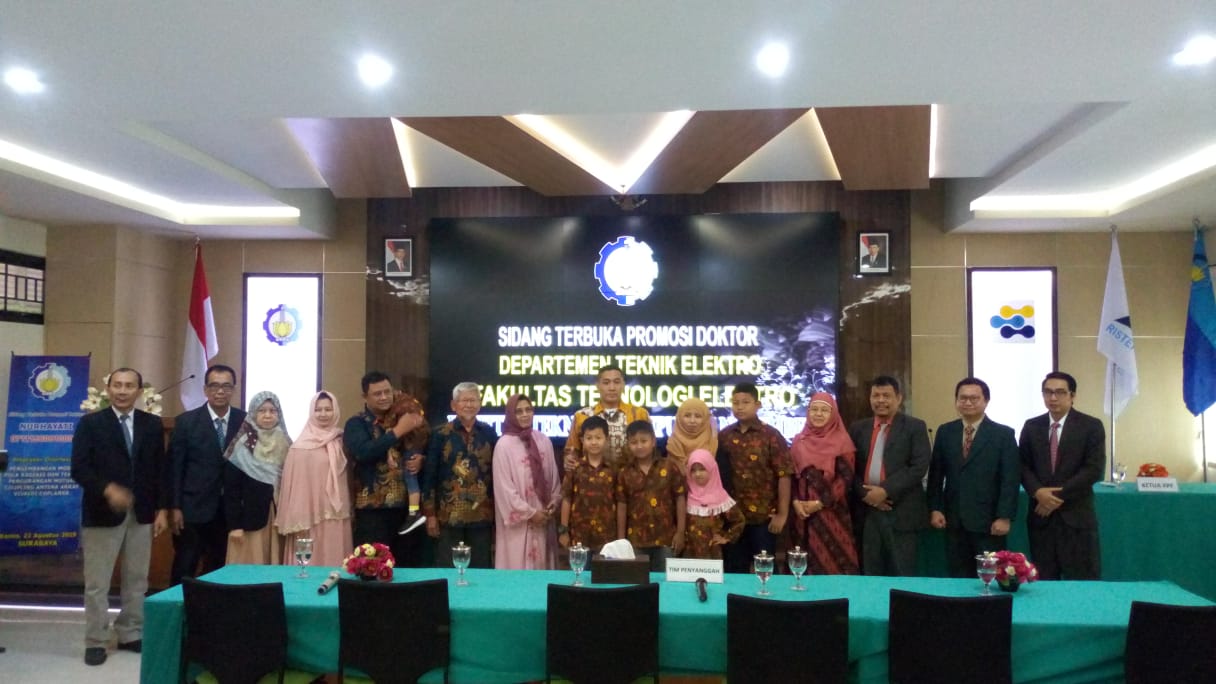ITS Doctorate Improves Antenna Performance in Telecommunications Systems

Nurhayati at the ITS Electrical Engineering Doctoral Open Session
ITS Campus, ITS News – The increasing need for data transmission has led to the rapid development of communication technology. This situation encouraged this doctoral program student of the Institut Teknologi Sepuluh Nopember (ITS) Electrical Engineering, Nurhayati, to raise the topic of an antenna in her dissertation. This topic was presented in an open session of doctoral promotion on Thursday (22/8) in ITS Electrical Engineering Meeting Room.
Nurhayati claimed to choose an antenna as the topic of her research because it is an important device in telecommunication systems frontend. “The current antenna technology still needs to be improved, so I’m interested to do the research,” said the woman who is also a lecturer at the University of Surabaya (UNESA).
She managed to get the doctorate after presenting her dissertation entitled The Development of Radiation Pattern Models and The Reduction Techniques of Mutual Coupling Antenna Array Vivaldy Coplanar. Nurhayati explained that Antenna Vivaldi is a planar antenna that works on wide bandwidth with high directivity and gain. The research aims to analyze the characteristics of the radiation pattern, model the radiation pattern, analyze mutual coupling, and model the mutual coupling.
The initial stage of this research was carried out by designing antenna elements and antenna arrays. Then analyze the characteristics of the antenna element and formulate the modeling of antenna element radiation pattern. The obtained Vivaldi antenna radiation pattern model will be used to analyze the total array pattern and formulating the modeling of mutual coupling antenna.

Nurhayati with promoters, examiners, and her family at the open session of ITS Electrical Engineering Doctoral Promotion
The final stage of this research was to create a reducing method of Vivaldi mutual coupling antenna array. Modeling results will be verified with simulation results and measurement results. The antenna created is Vivaldi Coplanar antenna, works at 2-10 GHz, using FR4, and mutual coupling below -20 dB.
She continued, from this study obtained characteristics of Vivaldi’s antenna radiation pattern, the modeling of Vivaldi’s antenna radiation pattern, the modeling of mutual coupling, and the reduction method of Vivaldi mutual coupling antenna. “The resulting modeling can be used for Vivaldi array antenna analysis which can be simulated using MatLab program,” Nurhayati said.
Promoted by Prof. Ir. Gamantyo Hendrantoro MEng Ph.D. and Eko Setijadi ST MT Ph.D., this woman who from Merauke revealed that she wanted to continue her research. “The antenna research is very diverse, and can be applied to many aspects,” she concluded. (naj/qi/gayatri)
Related News
-
ITS Formulates Inclusive Education System Policy for Students with Disabilities
ITS Campus, ITS News — The Sepuluh Nopember Institute of Technology (ITS) has once again demonstrated its commitment to
August 31, 2019 13:08 -
ITS Develops Andal App, a Solution for MSMEs to Manage Inventory
ITS Campus, ITS News — Amidst rapid technological advancements, many Micro, Small, and Medium Enterprises (MSMEs) still rely on
August 31, 2019 13:08 -
Consolink, an Automatic Soil Consolidation Testing Solution Created by ITS Students
ITS Campus, ITS News — A collaboration between a team of students and lecturers from the Sepuluh Nopember Institute
August 31, 2019 13:08 -
Supporting Economic Empowerment, ITS Signs MOU with BSI
ITS Campus, ITS News — The Sepuluh Nopember Institute of Technology (ITS) continues to strengthen its tangible and sustainable
August 31, 2019 13:08
